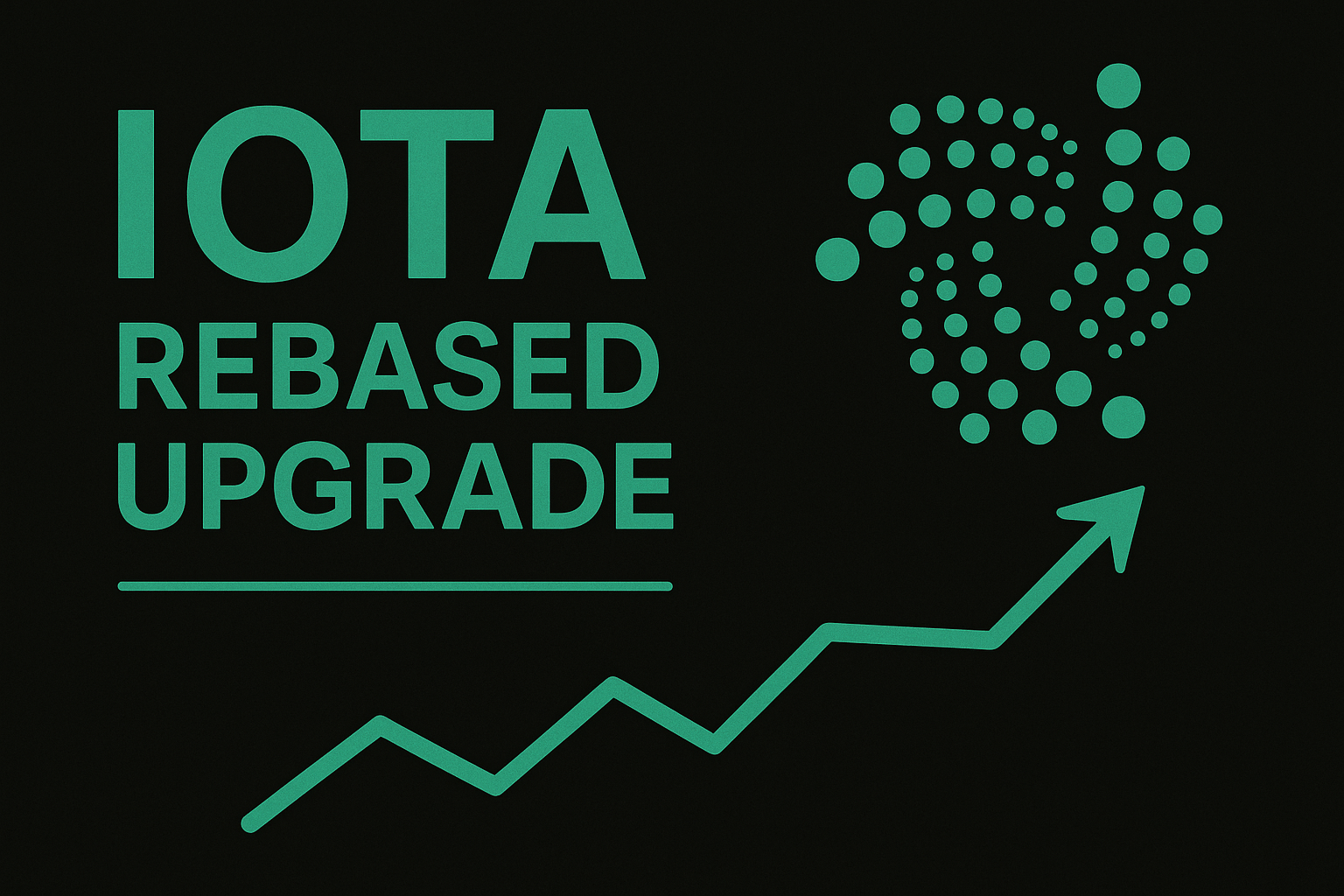IOTA Sets May 5 Launch for Major Rebased Upgrade—A New Era Begins

- IOTA’s Rebased network upgrade launches May 5, transitioning from Stardust with enhanced wallets, no token migration required.
- The Genesis Ceremony kicks off with 13 validators; full validator onboarding and infrastructure rollout will follow swiftly post-launch.
IOTA has officially set the launch date for its Rebased network upgrade—May 5, 2025. The launch comes after much anticipation from the industry and aims to improve the current IOTA ecosystem. The upgrade will shift the current IOTA Stardust network to a new system called simply the IOTA network. These changes will remove the need for token migration, too.
5.5.2025 → A new IOTA begins.
Built on nearly a decade of research.
Inspired by the best of Web3. Committed to open-source valueshttps://t.co/CR2O6rocM4
Smart contracts, decentralization, real-world adoption – just 2 weeks to launch1/4 pic.twitter.com/Q7UzJk6zac
— IOTA (@iota) April 22, 2025
Still, the users need to securely access their wallets via private keys, mnemonic phrases, or stronghold files from Firefly or Bloom. Once the new system is live, a new browser wallet extension will replace the old Firefly wallet. Further, IOTA also plans to roll out a detailed wallet dashboard panel for the token vesting schedules and asset management tools.

Ledger devices remain compatible, although the Ledger Nano S, now deprecated on Ledger Live, will require manual setup. For the Rebased IOTA Mainnet, users will need to install the updated IOTA Ledger app, ensuring secure access to assets after the migration.
13 Validators Kickstart Rebased Mainnet
The shift on May 5 begins with what IOTA calls the “Genesis Ceremony.” This event initiates the Rebased Mainnet through a structured sequence involving 13 validators, including the IOTA Foundation and other trusted names like Twinstake, Stakin, and Nansen. It all starts with shutting down both the Stardust mainnet and IOTA EVM, followed by capturing snapshots of the ledger state.

The IOTA Foundation and validators internally verify the data before creating mappings of old and new addresses—especially for treasury funds now managed by a third-party custodian. These mappings and other vital data will be openly published, reinforcing IOTA’s push for transparency.
A member of the Foundation acts as the “Master of the Ceremonies,” building the Stardust Objects Snapshot. Validators upload their metadata to a shared repository, leading to the creation of the initial checkpoint and migration files. These files document transactions that will jumpstart the new network upon launch.
All Eyes on May 5: Final Steps Before Go-Live
Before booting up the new network, all validators must sign off on the checkpoint and verify the integrity of migration data. This finalization phase ensures the genesis.blob includes all validator signatures, confirming consensus across the board. Once ready, the file gets distributed through public repositories and Amazon S3.
From there, each validator sets up nodes using the finalized genesis data. IOTA will simultaneously roll out new infrastructure—wallet apps, explorers, RPC endpoints, and node APIs—laying the groundwork for the ecosystem’s growth. IOTA EVM services are scheduled to come back online within four to eight hours post-upgrade.
Users can continue leveraging MetaMask for EVM interactions. A new tool, the IOTA EVM Bridge Web App, will assist in token transfers across the IOTA Layer 1 and EVM. However, users are urged to manage their positions wisely as downtime is expected during the transition window.
Wallets, Validators, and the Road Ahead
The new IOTA wallet experience is geared towards simplicity. Alongside the browser extension, IOTA offers migration guides, transaction instructions, staking steps, and asset management resources. Nightly Wallet also supports the upgrade and can be accessed via web or mobile platforms.
Two explorer tools—explorer.rebased.iota.org and IOTAscan.com—provide real-time network insights. These trackers help users follow validator activities, transaction histories, and smart contract interactions with clarity.
The Rebased network launches with 13 validators, but that’s just the beginning. IOTA plans to onboard roughly 10 validators per day post-launch, aiming for a validator count of around 50 by the end of the first week. Over the following months, this figure will grow to 150, expanding both reliability and decentralization.
